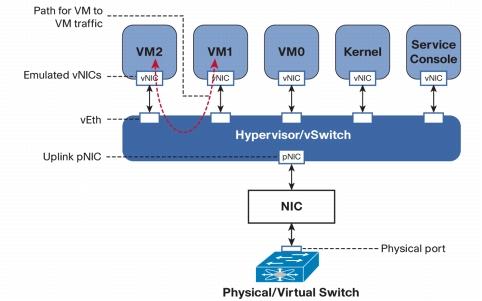- Related articles
- What is an Ethernet card?
- Optical Transceivers for Cisco WS-C3650-48TQ-L Switch
- Optical Transceivers for Cisco SRW248G4-K9-EU Switch
- Optical Transceivers for Cisco SG350XG-24T-K9-UK Switch
- All Cisco DWDM-XFP-43.73's information (List price, Specs, Datasheet PDF, Compatibility ma
- What is SFP-10G-SR?
- Optical Transceivers for Cisco WS-C3650-48PD-L Switch
- What is media converter in network?
- Optical Transceivers for Cisco SLM248GT-UK Switch
- The difference between XENPAK and X2

A network interface card (NIC) is a circuit board or card that is installed in a computer so that it can be connected to a network.
A network interface card provides the computer with a dedicated, full-time connection to a network. Personal computers and workstations on a local area network (LAN) typically contain a network interface card specifically designed for the LAN transmission technology.

Definition of Network Interface Card Architecture
To ensure compatibility between the computer and the network, the NIC must fit with the computer's internal structure (data bus architecture), And Have the right type of cable connector for the cabling.
In the personal computer environment, there are four types of computer NIC architectures.
Industry Standard Architecture (ISA)
ISA is the architecture used in the IBM PC, XT, and AT computers, as well as in all their clones. It allows various adapters to be added to the system by means of plug-in cards that are inserted in expansion slots. ISA was expanded from an 8-bit path to a 16-bit path in 1984 when IBM introduced the IBM PC/AT computer. ISA refers to the expansion slot itself (an 8-bit slot or a 16-bit slot). The 8-bit slots are shorter than the 16-bit slots that actually consist of two slots, one behind the other. An 8-bit card could fit into a 16-bit slot, but a 16-bit card could not fit into an 8-bit slot.
ISA was the standard personal-computer architecture until Compaq and several other companies developed the EISA bus.
Extended Industry Standard Architecture (EISA)
This is the bus standard introduced in 1988 by a consortium of nine computer-industry companies: AST Research, Compaq, Epson, Hewlett-Packard, NEC, Olivetti, Tandy, Wyse Technology, and Zenith.
EISA offers a 32-bit data path and maintains compatibility with ISA, while providing for additional features introduced by IBM in its Micro Channel Architecture bus.
Micro Channel Architecture
IBM introduced this standard in 1988 at the time it released its PS/2 computer. Micro Channel Architecture is electrically and physically incompatible with the ISA bus. Unlike the ISA bus, the Micro Channel functions as either a 16-bit or a 32-bit bus and can be driven independently by multiple bus master processors.
Peripheral Component Interconnect (PCI)
This is a 32-bit local bus used in most Pentium computers and in the Apple Power Macintosh computers. The current PCI bus architecture meets most of the requirements for providing Plug and Play functionality. Plug and Play is both a design philosophy and a set of personal computer architecture specifications. The goal of Plug and Play is to enable changes to be made to a personal-computer configuration without any intervention by the user.
What Does a Network Interface Card Do?
The NIC is also referred to as an Ethernet card and network adapter. It is an expansion card that enables a computer to connect to a network; such as a home network, or the Internet using an Ethernet cable with an RJ-45 connector. Due to the popularity and low cost of the Ethernet standard, most new computers have a network interface build directly into the motherboard.
Summary
To select the appropriate NIC for your network, you first need to determine the type of cabling and cabling connectors it will have. For example, a card that would work in an Apple computer communicating in a bus network will not work in an IBM computer in a ring environment: The IBM ring requires cards that are physically different from those used in a bus; and Apple uses a different network communication method.





































































